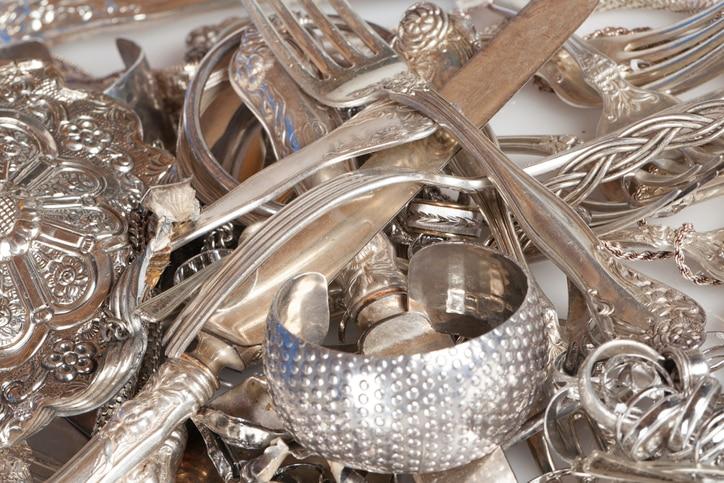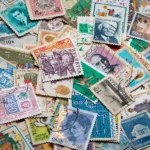
Open Daily 10am - 5pm
12,000sq.ft. of amazing items!
Free and easy parking!

It hardly needs to be written that those times are behind us. Much of that silver has long been sold off, melted down, or tucked away. What remains rarely comes up for air. How many of us recently ate our Thanksgiving turkey using silver-coated plastic tableware? We did. Nonetheless, many desert homes still have vestiges of this glittering era, albeit rarely brought out of its hiding place. Fine silver needs care and feeding to look its best, so the following is a primer for those diehards who still enjoy and use the real thing.
First of all, it’s worth nothing that pure silver will not tarnish but is simply too malleable to use in any functional form. That’s why your .99% silver bars and bullion tarnish much slower than your 92.5% sterling or 90% coin silver. Alloys like copper combine with the silver to chemically react with the environment, resulting in tarnish. While unsightly, tarnish is only skin deep and can be removed through a variety of techniques. More on that below. Note, however, that a patina of tarnish can give authenticity and gravitas to vintage silver and some people like the untouched look. Aggressive polishing can also cause scratching and remove any etchings or decorative designs in the silver. Thus, it’s worth considering the consequences before diving in with the cleaning cloth.
With that said, all fine silver should be polished with care. Anything with aggressive bristles should absolutely be avoided and commercial cleaning substances used with caution. There are a variety of home remedies that will do the same work without risk to the objects in hand. Faint tarnish can be knocked down with a clean soft cloth, warm water, and a very light detergent. A little bit of moderate rubbing should do the trick. If utter darkness has descended on your silver, then create a moonshine stew of salt, vinegar, baking soda, and hot water. Exacting recipes are online. Place this mix in a bowl or tub lined with aluminum foil and submerge your silver so that it’s resting on the foil. Almost magically, an electro-chemical reaction will take place that eliminates the tarnish and brings luster back to your treasured pieces. It sounds a little flaky but it works, and on silverplate as well.
There are also a few household staples like ketchup or toothpaste or Coca-Cola that reputedly will do the same thing, but those may be more fable than fact. In any event, the dipping solution above is especially useful for smaller pieces like flatware and also heavily ornate silver where tarnish has invaded all the nooks and crannies. It can be somewhat cumbersome for large items where you need something akin to a lobster pot to completely submerge the bowl or platter, but the piece can be turned over or moved around after a few minutes to maximize contact with the aluminum foil.
If you’re still the traditionalist and want to don gloves and get down with hand polishing, then by all means have at it. If it’s silverplate you want to spruce up, bear in mind that rigorous rubbing can remove the plating over time, leaving the underlying metal – usually brass – to show through. This isn’t necessarily a bad thing and can give a nice mixed-metal look to vases and candlesticks, but you should be aware of it all the same.
Once cleaned, you’ll want to keep it that way so a bit of effort is warranted here too. Commercial lacquer or wax solutions can sometimes extend the time between required polishings but the results can be inconsistent. A more tried and true method is to minimize the effects of environmental humidity or household chemicals by wrapping your silver in shrink-wrap or un-died cotton and tucking it away. It won’t keep things gleaming forever but will certainly help. On the other hand, proudly displaying granny’s silver tea set is a time-honored tradition and worth the effort of an occasional cleaning. Granny would have thought so.





We’ll email you about the latest events, sales, and general store updates.

Our antique gallery is located just south of downtown Palm Springs, with free parking and air conditioning throughout.
Open Daily: 10am – 5pm
505 E Industrial Pl.
Palm Springs, CA 92264
© Copyright Antique Galleries of Palm Springs 2024